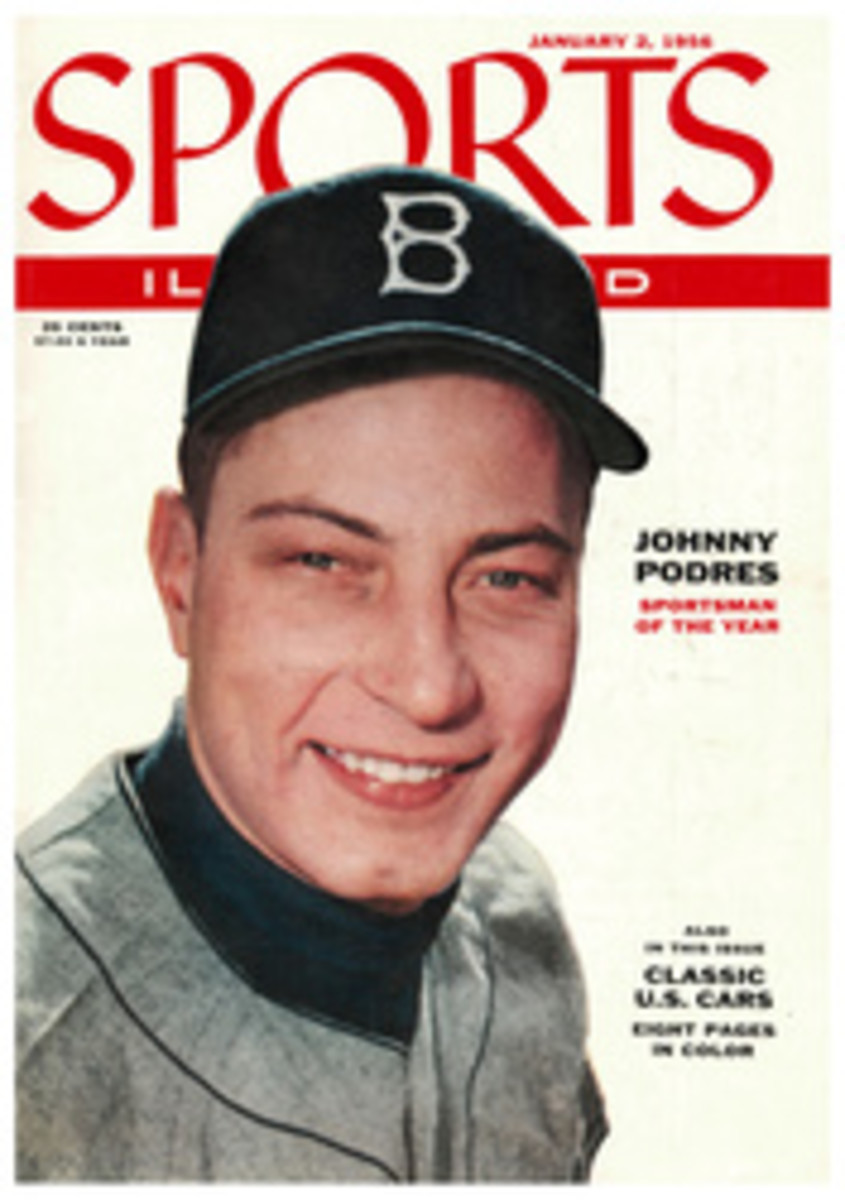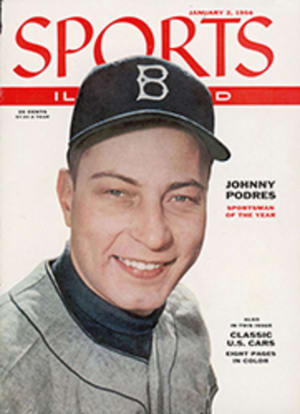
BEATING THE FLYER
There was a month or so most years, back in the last century, when the people in the Hudson River Valley were isolated, town from town and even farm from farm. Early in the winter the floating ice began coming downriver and gradually the cakes froze together into blocks of anchor ice—the first stage of the river's closing. The great expanses of ice became a playground, and iceboating its most exciting and fastest sport. The racing boats could jump six feet of open water while traveling at only a fair speed, tack downwind two to four times faster than the wind itself and obey the merest hint from the tiller. No one then thought about clocking times. Competition was direct and simple: the Clarks' boat beat the Youngs', and never mind the details.
Most of the iceboats were homemade, sloop rigged, with a big spread of canvas. They were tricky to handle, because tides, winds and storms were constantly affecting the condition of the ice. The boom was set higher than on an ordinary sailboat, and the tiller post rose high enough to project the tiller over the steersman, who usually lay prone in the diamond-shaped or rectangular basket. When brought sharply around on a tack, ballast was needed to weigh down the runners, and that was where we younger boys came in. Four or five of us, one on each side of the mast and two at the outer ends of the crosspiece, did the job. We perched on a plank about 15 inches wide, a freezing, precarious roost. We had to know when to move, and then move fast. When a sharp turn was made in a high wind, all of us might be huddled together at the extreme tip of the plank, and why we didn't fall off getting there no one knew. Boys seem to have an uncanny sense of balance.
Rome, a young swashbuckler, cherished what to me (I was 10) seemed a glorious ambition: to race his boat against the Albany Flyer. The only railroad in those days ran along the river's east shore, which was level and low and almost straight. Trains could build up tremendous speeds, and the crack train of them all was the Albany Flyer.
We four boys who made up Rome's crew would watch the Flyer go by and yell "yah" and thumb our noses at the engineer. We were torn between longing for the weather to break and fear of what would happen when it did, because everybody in the community was laughing at Rome's boast.
But there came a day at last when a strong, steady wind began to blow from the south, and the instant school was dismissed we tore down to the river. Rome ordered us to our places, and in a few long easy tacks we ran down-river to the starting point below Marlborough. The runners gripped beautifully on slightly granular snow ice, the wind blew steadily a few points east of south directly on the course of the river and we yelled and clowned on the cross-piece until Rome brought the boat smartly around, let the sails flutter and turned the tiller at right angles to the backbone so that the runner bit sharply into the ice as an anchor.
We kept our eyes on the slow curve of Low Point (now Chelsea), tensing as the first puffs of smoke rose over the tracks. When the engine thundered over the Wappinger Creek trestle, we looked at Rome. He dressed the sails and flung himself down by the tiller. We were off.
The wind caught the sails full and strong, the runner bit into the ice, setting up a constant vibration broken only when it cut through or jumped over frozen chunks. The train, going at more than 50 miles an hour, drew level with the boat. A visor-capped head peered out of the engine cab. The man's expression was scornful. Or so we imagined.
Rome was following the main channel, avoiding the shallower water by the east shore, for winds from north or south seemed to blow strongest where the deep water ran. The noise of the train roared in our ears, almost indistinguishable from the wind. The boat's speed began to pick up, and the engineer looked out again, with more interest. Soon smoke, thicker and blacker than before, began pouring out of the stack, and the wheels turned faster.
We yelled. It seemed we weren't on the river at all but were flying through air. At Blue Point the treacherous, ever-shifting crack stretched from shore to shore. Because a strong ebb tide was running, there were no piled up masses of ice to jump, but instead, there was open water—in some places 10 feet wide.
It was up to us on the plank to decide where to cross. Standing up, gripping the mast or the stays, we strained to see ahead. In one place there was comparatively smooth ice on either side of the crack, and no more than three or four feet of water between. I signaled in that direction, and Rome headed for the level spot. If the wind held, we would make it; in any case, there was no time for second thoughts. Instinctively we cringed. There was a lift, a splash, a deluge of freezing water as the plank and runner dipped, a bump, and we were over.
Beyond the Point, the river widened. On the east rose a line of furnace chimneys, and by the time we could breathe again after our drenching, the Flyer's black plume, abreast of us, was mingling with the smoke and flame from the Phoenix Horseshoe Works. Ahead, the abutments of a future railroad bridge rose like cairns above the ice, a menace to the flying iceboat, for as the tides shifted, the ice broke up and piled against them, leaving open water where it was least expected. Our boat hit the first hump at a speed which nearly knocked us off our icy perch. She jolted, creaked and lost precious speed; but she got through safely onto the smoother ice off Lange Rak (Long Reach), and we flew on, still hopeful of victory.
Time had ceased to be measurable. The nine-mile run might have lasted a minute or an eternity. We had lost sight of the train, which might have been halfway to Albany. Rome let the sails slack off, and the boat slowed to a stop. And where the tracks curved back to the river's edge, there came the Flyer. We had won.
We fell off the plank, shaking with cold and excitement, and jumped up and down, yelling and waving like lunatics. From the engine cab bare heads poked out while the whole crew waved their caps and shouted, though the sound was lost on the wind. The whistle blew a special blast, and as the last car passed us, a portly, blue-uniformed man on the back platform raised his arm in salute. We were the happiest boys in New York State.
ILLUSTRATION
IN A FAMOUS HUDSON RIVER RACE IN 1871, THE "ZEPHYR" AND JOHN ROOSEVELT'S "ICICLE" BEAT THE CHICAGO EXPRESS

